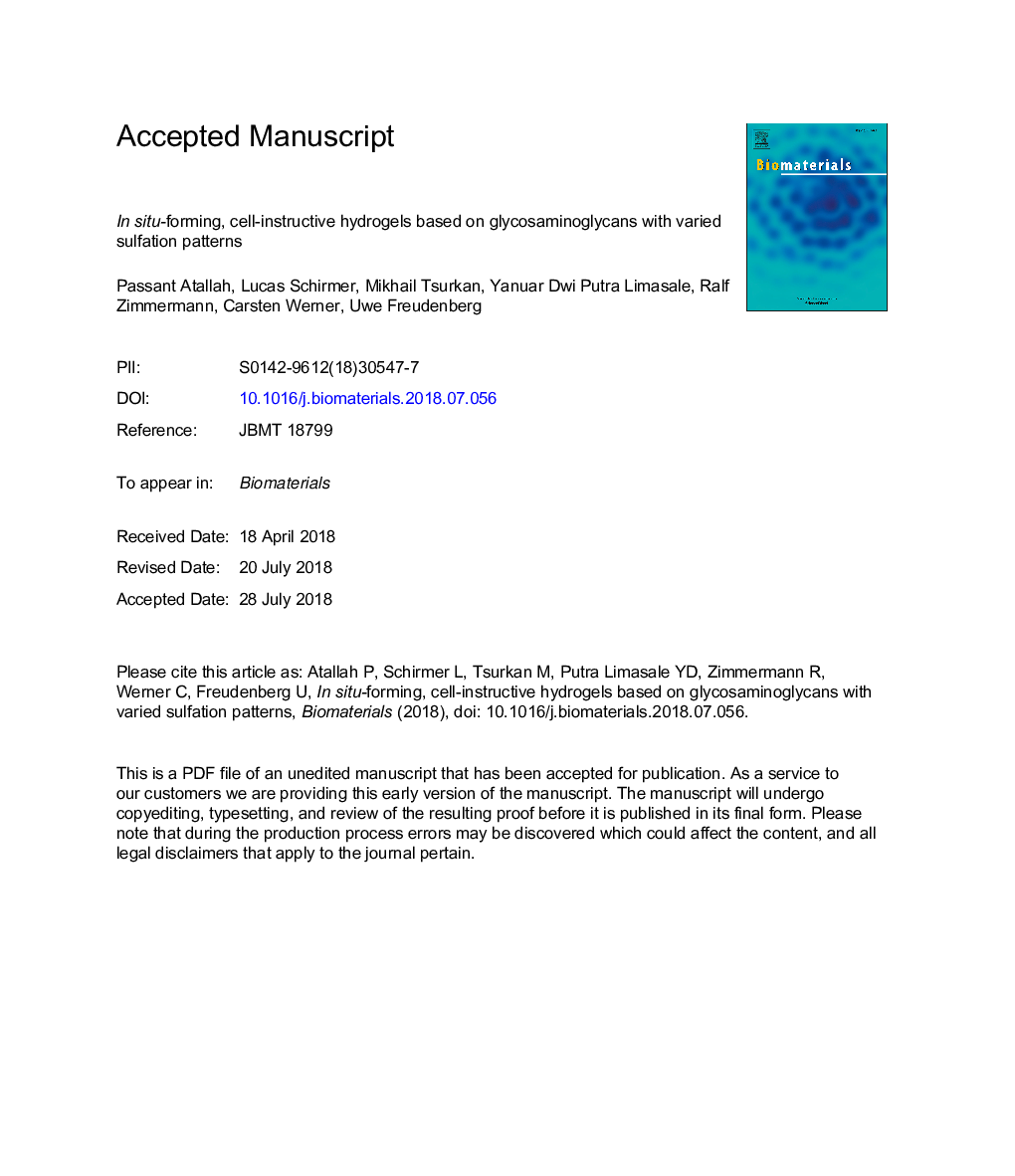| Article ID | Journal | Published Year | Pages | File Type |
|---|---|---|---|---|
| 6484299 | Biomaterials | 2018 | 41 Pages |
Abstract
Glycosaminoglycan (GAG)-based hydrogels were proven highly effective to direct cell fate decisions by modulating the administration of cytokines. The sulfation pattern of the GAG component critically controls its affinity to proteins and thus governs the release of cytokines from GAG-containing gel systems. To apply this principle in the design of in situ assembling materials suitable for cell embedding and injection into tissues, we developed a platform of bio-orthogonally crosslinked star-shaped poly(ethylene glycol) (starPEG)-GAG hydrogels that display variable GAG sulfation patterns. Combining rational design for tuning the hydrogel network properties and a reaction-diffusion model for predicting transport processes within the matrices, we exemplarily applied the resulting materials for tailoring morphogenic and chemotactic gradients of platelet-derived growth factor-BB (PDGF-BB) in 3D. Conditions identified with this approach were demonstrated to effectively control the fate and morphogenesis of embedded mesenchymal stem cells (MSCs). Adjusting the sulfation patterns of glycosamnioglycans used in the preparation of in situ forming hydrogels is thus concluded to create new powerful options for modulating biomolecular signals in cell fate control, paving the way for advanced 3D cultures and precision tissue engineering.
Related Topics
Physical Sciences and Engineering
Chemical Engineering
Bioengineering
Authors
Passant Atallah, Lucas Schirmer, Mikhail Tsurkan, Yanuar Dwi Putra Limasale, Ralf Zimmermann, Carsten Werner, Uwe Freudenberg,
